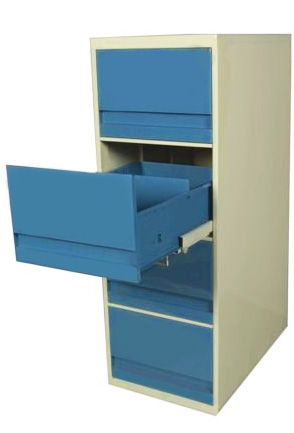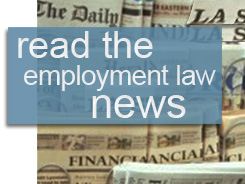
Maintaining the H-1B Public Access File
 Maintaining a public access file is an integral part of complying with H-1B laws. Public access files as discussed in this article apply only to H-1B workers. Once a public access file compliance regime is established, maintenance is quick and easy. The object is to create a public access file that contains documents that arguably satisfy the minimum legal requirements. Many employers do not maintain public access files at all, and the vast majority does not maintain them properly. And having well maintained public access files can make a dramatic impression in the event of an audit. The regulations directing the maintenance of public access files are 20 CFR 655.760.
Maintaining a public access file is an integral part of complying with H-1B laws. Public access files as discussed in this article apply only to H-1B workers. Once a public access file compliance regime is established, maintenance is quick and easy. The object is to create a public access file that contains documents that arguably satisfy the minimum legal requirements. Many employers do not maintain public access files at all, and the vast majority does not maintain them properly. And having well maintained public access files can make a dramatic impression in the event of an audit. The regulations directing the maintenance of public access files are 20 CFR 655.760.
ESA investigators have confirmed “off the record” that occasionally employer audits will begin with an anonymous phone call requesting to see H-1B public access files.
The Employment Standards Administration (ESA) – the same Department of Labor (DOL) division that investigates FLSA violations – audits and investigates violations under the H-1B program as authorized by the Labor Condition Application. Although Department of Labor audits are statistically rare, the public access file is the first contact an ESA investigator has with your company. And first impressions can have an impact on the course of events that may occur during an investigation.
In most cases an ESA investigator will provide three days notice before arriving at the worksite to review public access files. But ESA investigators have confirmed “off the record” that occasionally employer audits will commence by an ESA investigator placing an anonymous phone call to the company requesting to see H-1B public access files. If a company administrator refuses to allow this “anonymous” member of the public to schedule an appointment to see the files, this will constitute the employer’s first investigated violation. Any member of the public is entitled by law to inspect public access files.
Please note that the code sections provided in this memo are for reference, but rules change and this information is not guaranteed to be current. Please consult an attorney and do not rely on any information at this website for legal purposes.
Tips for Maintaining a Public Access File
 It is important not to include any document in the public access file unless specifically required. Because the public and the Department of Labor have the right to inspect your company’s public access files, it is important not to put documents or information in those files that can compromise employ privacy, or result in unnecessary liability or embarrassment for the company. In short, it is important not to include any document in the public access file unless the law specifically requires you to.
It is important not to include any document in the public access file unless specifically required. Because the public and the Department of Labor have the right to inspect your company’s public access files, it is important not to put documents or information in those files that can compromise employ privacy, or result in unnecessary liability or embarrassment for the company. In short, it is important not to include any document in the public access file unless the law specifically requires you to.
A complete copy of the H-1B petition should not be included in the public access file, nor should company financials, confidential employee information like academic records, employment history, disciplinary reports, or other documentation properly stored in the employee’s personnel file. To accomplish this goal each H-1B employee’s public access file must be separate from her personnel file.
To further safeguard your employees’ privacy you may identify your public access files by number and then store a key list in a private location identifying each number with the appropriate employee. Then you may provide this key to the Department of Labor in the event of an audit to enable the investigator to determine which file belongs to which employee. However, in a public seminar given on August 17, 2001 in San Francisco (and organized by Olender Law Office), Linda Jan Pack, Counsel to DOL’s Employment Standards Administration, stated that in her opinion a public access file would not be adequate if it lacked the name of the H-1B employee. This specific issue is addressed neither in the regulations, nor in case law. It is at the employer’s discretion whether to identify by name or number.
Checklist of Documents to Include in the Public Access File
The following items are listed under 20 CFR 655.760 as necessary to include in the H-1B public access file:
A copy of the completed labor condition application with instructions (Form ETA-9035 with Form ETA‑9035CP – if filed electronically, the employer should retain the original signed LCA in the public access file. 20 CFR 655.760(a)(1);
Documentation showing the wage rate paid to the H‑1B worker – meaning the precise wage paid to the H-1B worker in actual salary and not an estimate. 20 CFR 655.760(a)(2);
- A full, clear explanation of the system the employer used to set the “actual wage.” 20 CFR 655.760(a)(3);
- A full, clear explanation of the system the employer used to set the “prevailing wage.” 20 CFR 655.760(a)(4);
- Proof of satisfying union/employee notification requirements – for non-union positions this means the posting notice. 20 CFR 655.760(a)(5);
- A summary statement of benefits offered to US workers and H-1B workers. 20 CFR 655.760(a)(5);
The Complete Labor Condition Application
Labor condition applications have two portions, (a) ETA-9035E – the five page form that the employer signs, and (b) ETA-9035CP – the ten page form that provides instructions and attestations for the ETA-9035 and ETA-9035E. The public access file should include both forms and this office provides both forms at the time that the H-1B forms package is transmitted by e-mail to the company representative for signatures. Both of these forms are included in the one ‘Labor Condition Application PDF file’ that Olender Law Office sends with each H-1B case. This entire labor condition application of sixteen pages should be posted in two conspicuous locations for ten days and both copies should be stored in your public access file.
Please note that 20 CFR 655.760(a)(1) requires the employer to retain the original signed labor condition application in the public access file where the case was submitted electronically. Olender Law Office only submits labor condition applications electronically, so in every H-1B case, our clients should retain a copy of the entire original signed labor condition application in the public access file. Clients often mistakenly send Olender Law Office the original signed LCA with the other original signed H‑1B forms. Please retain the original signed LCA for your public access file and send Olender Law Office a copy of the LCA with the other original signed H-1B forms. But please note that the LCA is the only form that should be submitted to INS as a copy – all of the other H-1B forms must bear original signatures.
A Statement of the H-1B Worker’s Wage
This requirement is simply for a statement of the H-1B worker’s salary or wage. It is important to specifically list the H-1B worker’s salary or wage and not merely a statement of a salary range or a range of wages that applies to the H-1B worker.
Actual Wage Memo
“Actual wage” is a technical term for the average wage that the employer pays all other individuals with similar experience and qualifications for the specific employment in question. In determining the wage level, the employer can consider experience, qualifications, education, job responsibility and function, specialized knowledge and other legitimate business factors. The term “actual wage” is defined at 20 CFR 655.731(a)(1). The Actual Wage Memo must include enough information about the employer’s method for calculating the actual wage to provide a “full and clear” explanation.
The employer’s explanation of the actual wage for the public access file will be called the Actual Wage Memo for the purpose of this article. The Actual Wage Memo must include enough information about the employer’s method for calculating the actual wage to provide a “full and clear” explanation. This should at a minimum identify the job that the H‑1B worker holds and then identify the job title and job level that the H-1B worker falls under due to the job duties and the H-1B worker’s education, experience and other factors.
For example, where a company employs a variety of computer software specialists, it may be possible to divide the jobs for all of these workers into the following titles: software engineer levels 1 and 2, computer programmer levels 1 and 2, and quality assurance engineer levels 1 and 2. Then, by identifying the H-1B worker into one of these categories – for example Quality Assurance engineer Level 1 – it is possible to determine the actual wage for his peers. To do this, take the sum of the annual salary or hourly wage for all of the workers except the H-1B worker in the same position and level as the H-1B worker and divide by the number of other workers. The result is the actual wage:
ABC Corp. hired an H-1B worker as a QA Engineer II. There are three other QA Engineers II at ABC Corp. with similar duties, education and experience. These workers’ salaries are: $64,000, $51,000, and $71,000. The actual wage is the average ($64,000 + $51,000 + $71,000 = $186,000/3 = $62,000). The actual wage is $62,000 per year. The employer must pay the H-1B worker the higher of the prevailing or actual wage.
An Explanation of the Prevailing Wage System
The Prevailing Wage is the wage survey or State Employment Services Agency wage that represents “the going rate” or the average paid to similarly employed workers in the same geographical area. If this wage is higher than the “actual wage” described in the previous section, then the employer must pay this prevailing wage.
The Prevailing Wage is the “the going rate” or the average paid to similarly employed workers in the same geographical location.
The employer’s explanation of the “prevailing wage system” must include a copy of the wage determination itself and a brief statement of the methodology that the wage survey used to obtain the result. The wage should also include a date of publication. The OES wage survey often used by Olender includes the most recent date of publication and a PDF copy of the wage is always included in the PDF H-1B forms package. For a PDF copy of the technical notes for the OES/SOC wages that will satisfy the explanation requirement for positions where the OES/SOC wage was used for the labor condition application.
Proof the Employer Satisfied the Notice Requirements (Posting or Union)
The employer must post the Labor Condition Application in at least two conspicuous locations for at least ten business days. Of course, if the company is audited a year or two after the posting is made, how will you know who posted the notice, where it was posted, or for how long? To solve this problem, Olender Law Office includes a posting form with each H-1B PDF forms package that includes a space to indicate who posted the form, where he posted it, and the dates that it was posted and removed. By retaining an completed Olender Law Office posting form for each of the two Labor Condition Applications that you posted, you can rest assured that you will be able to prove to an ESA Investigator that the postings were properly made.
The Benefits Statement
Under the American Competitiveness in the Twenty-First Century Act passed in October 2000, H-1B workers must be offered the same benefits as similarly employed US workers except for cases where multinational employers wish to provide their employees with “home country benefits.”
To satisfy this requirement, the employer should include a brief statement confirming that all employees are provided with the same benefits and provide a summary of what those benefits are. Or if similarly employed workers are provided with the same benefits regardless of immigration status, then state this and provide a summary of the benefits offered.
The Private Access File
The employer should also separately maintain a private file containing documents it must submit to Department of Labor or USCIS in the event of an audit. The private access file should contain:
- Proof the employer posted labor condition application for ten business days in two locations at the worksite
- Written acknowledgement or other proof that the beneficiary received a copy of the labor condition application no later than the first day of work
- The specific salary data the employer used to calculate the actual wage
The employer is not required to allow a member of the public to view these documents and need not reveal their existence in the event a member of the public asks to see the public access files.
When a New Labor Condition Application Is Required
An H-1B employer is required to file an H-1B amendment whenever the employer must file a new labor condition application. A new labor condition application (LCA) is required when there is a material change in employment, which usually includes:
- A significant change in job duties
- Any reduction in pay regardless of amount
- A significant increase in pay
- Moving to a worksite not within the area of intended employment
- Any material increase or decrease in hours worked
Department of Labor published a good FAQ on this issue
in 2009 that you can read here
Department of Labor modified the ETA 9035 labor condition application in 2009 to require employers to list precise worksite addresses. The old ETA-9035 asked for the city and state where the worksite was located, but not the worksite address. The new form's request for worksite addresses has caused some confusion. Is a new LCA required when a worker changes worksites within the "area of intended employment" or when the worker changes worksites? What if an H-1B worker moves from one worksite to another that is within the "area of intended employment" listed on the LCA, but not a precise worksite located in the LCA?
Department of Labor has taken the position that an LCA covers work at any worksite within the area of intended employment and a new LCA is not required when moving a worker from one worksite to another within the area of intended employment. Area of intended employment is defnied as an area within normal commuting distance, which tends to be counties, but sometimes areas overlapping or within counties.
What about additional worksites outside of the LCA's area of intended employment? There are two types of worksites under the Department of Labor's labor condition application regulations: a "worksite" and a "non-worksite." If the H-1B worker will work at a non-work site, a new labor condition application is not required. The Department of Labor defines non-worksites as relating to the following employment situation:
- The job requires frequent travel to client sites or other locations and the H-1B worker does not spend more than five consecutive workdays at the same off-site worksite on any one trip;
- The H-1B worker sometimes travels to other off-site worksites, but works mostly at the worksite listed in the labor condition application and the worker does not remain at any one off-site worksite more than ten consecutive workdays on any one trip; or
- The temporary work at the third-party worksite is to attend, but give conferences, trainings, seminars or meetings.
If the H-1B employee's temporary placement at a worksite not listed in the H-1B petition does not fall into any of the "non-worksite" categories above, the H-1B employer may still be excused from filing a new LCA if the transfer qualifies as a short-term placement.
An H-1B employer may send an H-1B worker on short term projects to worksites not listed in the labor condition application. The short term projects cannot cumulatively exceed 30 days in a one year period (either the calendar year or employer's fiscal year) and the following conditions must be met:
- There is not a strike, lockout or labor dispute in the same occupation at the temporary work location;
- The employer continues to pay the H-1B employee the required wage, which is the greater of the H-1B prevailing wage at the permanent work location or the actual wage paid by the employer to similarly situated workers; and
- The employer must pay for the H-1B employee's actual costs of travel, lodging, meals and incidental expenses for weekdays and weekends.
An H-1B worker may work at locations not listed on the LCA for up to 60 days cumulatively in one year if the worker:
- Maintains a permanent office at the worksite listed in the LCA;
- Spends a substantial amount of time at the permanent work location during the one year period; and
- The worker's primary residence is in the area of the permanent work location.
If the H-1B worker's offsite assignment exceeds 30 days in the one year period (or 60 days if the worker meets the 60 day rule's requirements), the petitioner must file an amended H-1B petition with a new labor condition application. And if the H-1B worker's assignment does not qualify under one of the described above, the petitioner must file an H-1B amendment with a new labor condition application.
Conclusion
H-1B public access file is a crucial compliance requirement. Failure to maintain public access files can result in civil penalties, back wage orders, and even debarment from the H-1B program. Often audits result from disgruntled workers filing a complaint with the Department of Labor. These workers may be H-1B, or US workers who were terminated and had trouble finding other employment. If your company is planning, or has recently had layoffs, or contentious relations with any employee in the recent past, now is a good time to carefully review your H-1B file compliance.
Contact Olender for a public access file audit and seminar where we show you how to maintain public access files and review yours for adequacy. We've guided our clients through Department of Labor employer audits and if you comply with the rules, audits are quick and easy and result in no liability.
visit us at:
San José, CA 95008
Santa Cruz, CA 95060
The Olender Pro Bono Project
We represent some clients who have compelling cases and little money at no charge. Sean received the Benito Juarez human rights award in 2008 and the ALRP Volunteer Award in 2012 for taking more than 10 pro bono cases in 12 months. We need volunteers. E-mail Debbie to volunteer.
Change Your Address at DHS!
If you are not a US citizen, you must change your address with DHS within 10 days of moving or face deportation. Click Here.






































